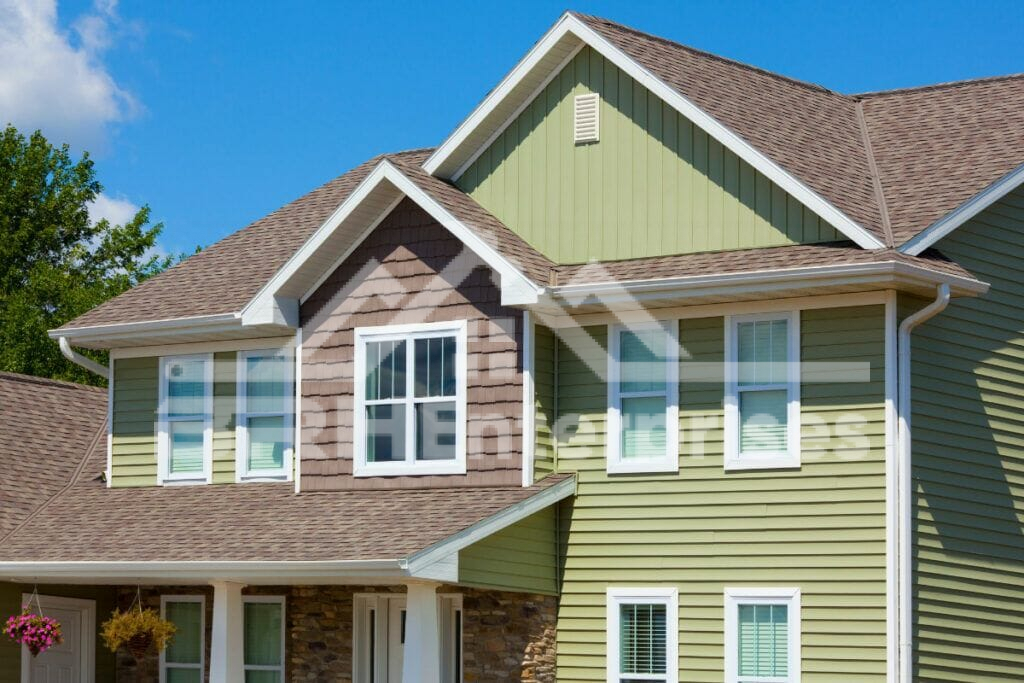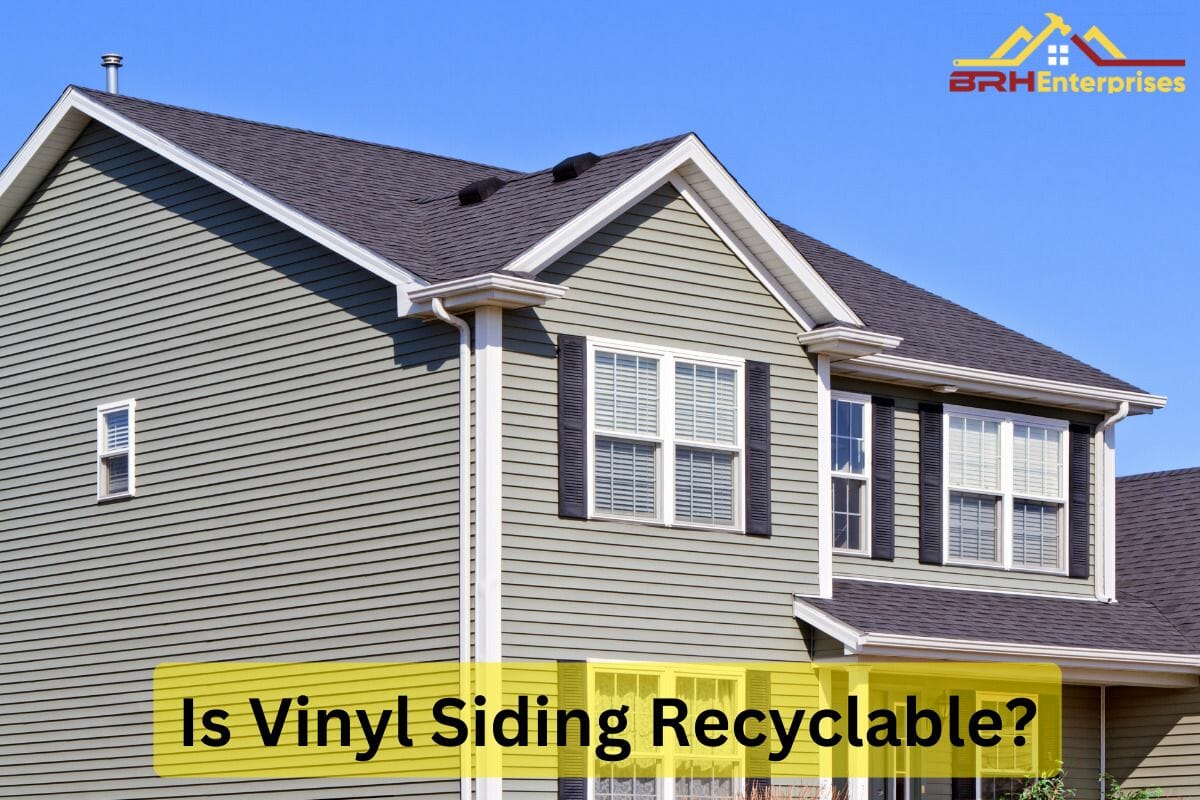If you are planning to install vinyl siding for your home, you might be wondering if it is recyclable and what happens to it after its usable life. Here is some information that might help you make an informed decision.
While vinyl is a recyclable material, some of what is used on homes end up in landfills. However, now that people are informed about their effects on the environment, they choose to recycle vinyl siding rather than throw it away in landfills. If you’re someone who is interested in recycling their vinyl siding, you’re in luck. In this article, we’ll explain how to recycle vinyl siding, the importance of doing so, and its limitations.
Understanding Vinyl Siding
With the advent of vinyl in 1926, the world noticed an extreme surge of vinyl products on the market, including vinyl siding. Vinyl siding, which can mimic other siding materials such as wood, gained popularity in the home improvement market. Not only does this siding imitate the look of natural siding materials, but it also comes with increased durability, water resistance, and enhanced aesthetics at a lower price. The affordability and high production rate of vinyl siding have helped it become a popular material you’ll find on almost every home across the country.
Vinyl siding is an external material that covers the walls of a home, protecting them from water infiltration, moisture, and weather elements. They come in vertical or horizontal panels that are installed on walls with professional assistance or as part of a DIY process. No matter which way you install it on your home, the proper installation of these panels is necessary in order to reap all the benefits they provide.
If you want to know more about vinyl siding, check out our blog post on whether you can paint vinyl siding.
Importance of Recycling Vinyl Siding

Recycling vinyl siding is important to stop the harmful effects of vinyl in landfills.
Reduce the Amount of Waste
Vinyl siding is a durable and long-lasting material that can provide protection to walls for up to 15 years with proper maintenance. However, intense storms and high winds can sometimes cause damage, leading to a shorter lifespan. Frustrated homeowners may then opt to remove and dispose of the vinyl siding in landfills, and since the material is non-biodegradable, it contributes to increased waste. To reduce waste and minimize the impact on the environment, it is important to recycle vinyl siding.
Create New Products With Economic and Social Value
Recycling vinyl siding gives the material another chance to become something new, and of economic and social value. Recycled vinyl siding can be used to manufacture vinyl pipes, floors, decking, and toys. Since vinyl contains toxic chemicals such as chlorine, it must be broken down into vinyl resin under proper guidelines and inspection before it can be used to create new products.
Steps to Recycle Vinyl Siding
Here are some quick and easy steps to help you recycle your vinyl siding.
Find a Certified Recycler
In the past, people were unaware of the negative impact that vinyl siding can have on the environment and may have disposed of it in landfills, contributing to the increasing amount of waste. However, with increased awareness of the importance of a clean and green environment, people are now making more informed decisions about how to dispose of their vinyl siding. To recycle your vinyl siding, it is recommended to search for a certified vinyl recycling company that will responsibly use it to create new products.
Remove The Vinyl Siding
When it comes to removing your vinyl siding, you could do it yourself, and risk damaging the siding and your home even further, or, you could hire a professional who has the skills and experience in doing so. A professional will most likely know where to recycle the siding, so you could also have them dispose of it for you.
Sort the Materials
Sort the vinyl siding material color, thickness, and type. This is important because different types of vinyl siding may require different recycling processes.
Transport the Material
Transport the sorted vinyl siding to a certified recycling facility that accepts this material. Check with your local waste management or recycling center to find out where you can recycle vinyl siding in your area.
Prepare the Material For Recycling
Once you arrive at the recycling facility, the vinyl siding material may need to be further processed before it can be recycled. This may involve shredding or grinding the material into smaller pieces.
Recycle the Material
The shredded or ground-up vinyl siding material will be recycled and used to create new products such as pipes, window frames, or other building materials.
Challenges and Limitations of Vinyl Siding Recycling
For inexperienced contractors, removing vinyl siding can be challenging and daunting. To ensure safety, it is important to take proper precautions when handling vinyl siding, such as wearing a mask and gloves. Some other challenges of recycling vinyl siding include:
Contamination
Vinyl siding can only be recycled to form other vinyl products. Recycling it with other polymers will contaminate the vinyl, potentially affecting its original properties, such as durability and longevity. Therefore, vinyl siding is recycled with proper care to ensure it doesn’t become contaminated with other materials such as paint, caulk, and insulation.
Lack of Infrastructure
Some areas may have limited recycling centers for vinyl siding, making it difficult to find a recycling facility that accepts this material. This can also lead to higher transportation costs and lower overall recycling rates.
An Energy-Intensive Process
The process of recycling vinyl siding can be energy-intensive, as it requires grinding or shredding the material and melting it down for reuse. This process may also produce emissions and have other environmental impacts.
Limited Demand For Recycled Material
While there are many potential uses for recycled vinyl siding, there may be limited demand for it in certain markets. This can make it difficult for recycling facilities to sell the material, limiting the economic viability of recycling.
Alternatives To Recycling Vinyl Siding
Reuse
Instead of recycling, vinyl siding can sometimes be reused in other construction projects. This can be especially useful for small projects or repairs where the amount of material needed is limited.
Upcycling
Upcycling involves transforming vinyl siding into new and useful products. For example, vinyl siding can be repurposed as outdoor furniture, planters, or wall art.
Use of Alternative Materials
In some cases, replacing vinyl siding with alternative materials that are more environmentally friendly, such as fiber cement, wood, or metal siding, may be possible.
Do You Want To Install Vinyl Siding On Your Home or Office?
Although vinyl siding has many disadvantages when thrown into landfills or by the roadside, installing it can increase your home’s curb appeal and durability. This long-lasting siding product has many benefits for homeowners, so if you’re looking to install new vinyl siding, we’re the team for you!
We install vinyl siding with proper care to ensure it’s strong enough to face harsh weather of all types. If you’re looking for an alternative to vinyl, we can help with that as well. Our team has years of experience handling all types of siding, along with other exterior services. Call BRH Enterprises today at (920)-249-4228 to install siding on your home or business.



